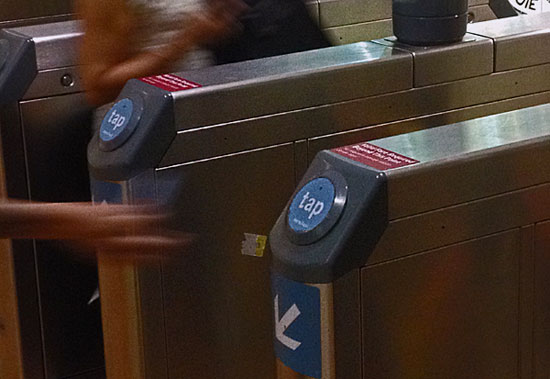Metro locks in more revenue
October 17, 2013
Do the math. Taking L.A.’s subway system off the honor system should mean a bump for Metro’s bottom line—and that’s exactly what happened in the first month since gate-latching was completed.
According to Metro’s data for September—the first full month available—revenues have increased by 40% when compared to May, the last month before the lengthy gate latching process started. If that increase holds steady, it would mean an extra $6 million in collected fares each year, said David Sutton, Metro’s deputy executive officer in charge of the project.
“An increase in revenue like this can be put back into the system,” Sutton said. “We can increase our hours of operation, add train cars, we can buy more buses—there is a whole myriad of things we can do with that money.”
Meanwhile, weeding out freeloaders means that ridership on the subway lines has decreased, even as the number of paying customers using TAP cards to gain access to the Red and Purple lines has skyrocketed.
Fare evaders are now unable to freely enter the system and, for the most part, have moved on to other modes of travel, Sutton said, giving paying customers a better ride by improving their security and safety—and by opening up a little more elbow room.
Even with the gates latched, some committed scofflaws will always find ways to game the system, Sutton said. About 19,000 people entered the subway without paying in September, using a variety of tricks or blatantly jumping the gates. Metro is in the process of tweaking the new system to make fare evasion more difficult, and the Sheriff’s Department is issuing citations to catch those who squeeze through.
Nonetheless, in most places the system is working well. During one morning rush hour this week, transit patrons streamed through the gates at the North Hollywood station, tapping in succession as they rushed to catch the next train. At ticket vending machines, fare purchases were made swiftly, with no long lines forming.
A few cyclists were slow getting through, lifting their bikes over the top of turnstiles or, like one young woman, tapping a fare card before pushing through an emergency gate. Sutton said cyclists can currently use the elevator to access the system, but few avail themselves of the option. Metro is planning to add a new gate, similar to the gates for disabled patrons, that will offer cyclists an easier path.
And a few fare-beaters were still trying to get a free ride. One teenager hopped over the gate, singing loudly to the music on his headphones.
But, glitches aside, gate latching has already proved transformative for the transit agency. Metro currently is working to bring some latched gates to its expanding light rail system. While not all stations can be latched due to logistical barriers, Sutton said he believes fare collection will continue to improve as Metro latches some stations along the Gold, Blue and Green lines, an effort scheduled for completion by February, 2014.
More than a million TAP cards are currently active in the system, about twice as many as when ticket vending machines were made TAP-only two years ago.
“If you look at the numbers and you look at the behavior, people are tapping,” he said. “I don’t think we’ve ever had gates; it’s a big behavioral change.”
With the assistance of help phones near entry points, Metro has been able to accomplish that change without having staff present at every station.
“It’s been incredibly smooth—we were expecting a lot more customer pushback,” Sutton said. “The biggest thing I remember is people that would give us a thumbs-up and say ‘it’s about time.’ People that pay want and expect everyone else to pay.”
Posted 10/17/13













 405 bridge work causes a stink
405 bridge work causes a stink

